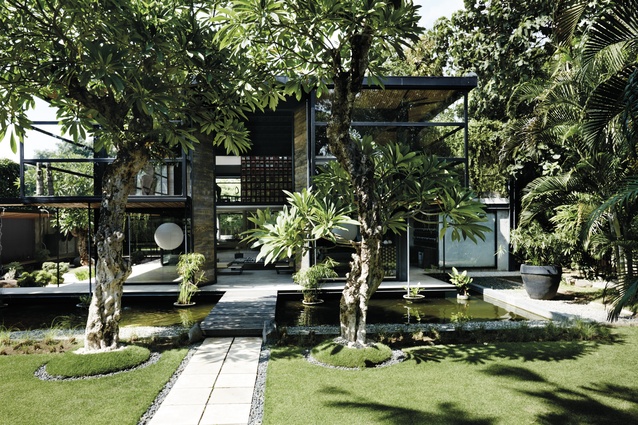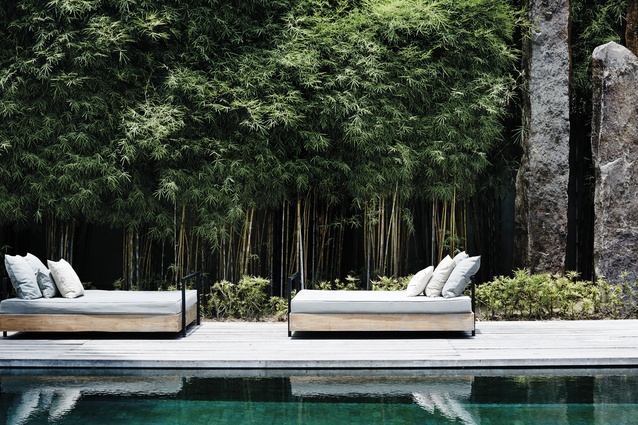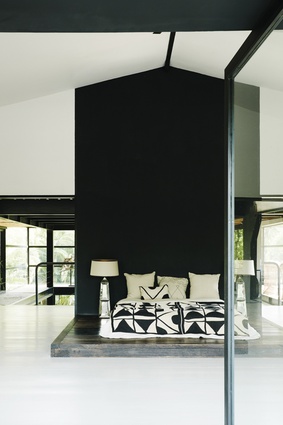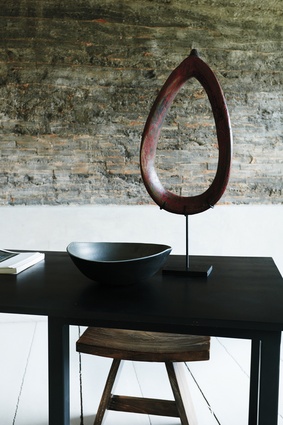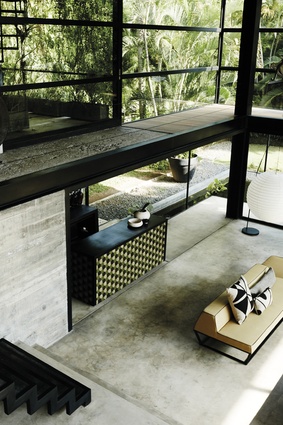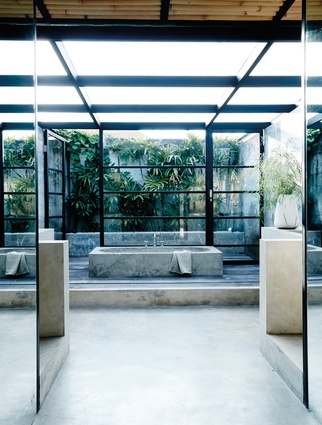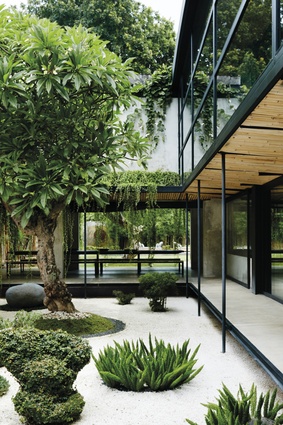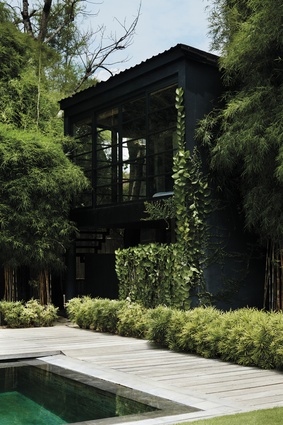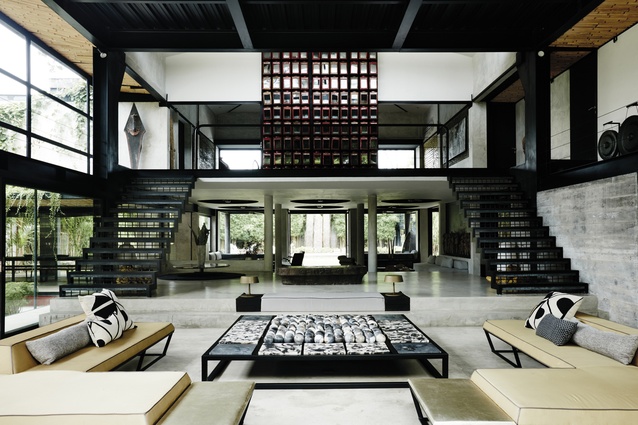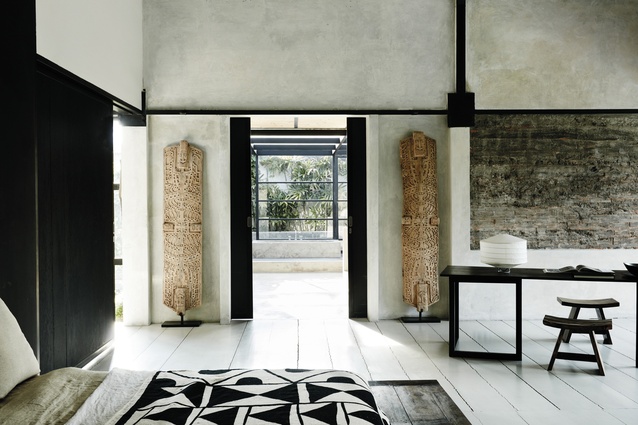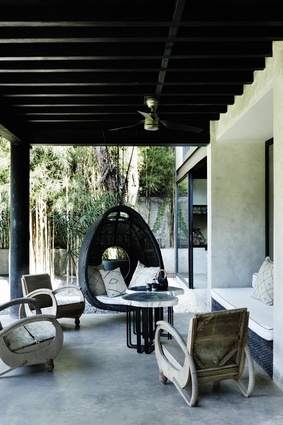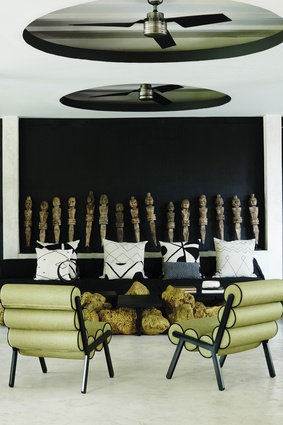Doors wide open: Bali Villa
A designer villa in Bali, inspired by Japanese minimalism and with a strong environmental ethos, captures the essence of simplicity, luxury and relaxation.
The home, a minimalist masterpiece conceived by owner Damien Denoncourt and crafted by industrial designer Nicolas Robert, was made on a grand scale. The main entrance’s 6.5m door is left open. The door is made from Ironwood roof planks repurposed from the artist’s studio that once occupied the site, which have been washed in gold.
Denoncourt explains, “Growing up I was fortunate to live in houses with very high ceilings. This time we took it to the extreme. I had never seen a house with such high ceilings. Adding a small door to that room would have seemed petty. As we love to host friends, we wanted them to feel welcomed by an oversized front door which is always open.”
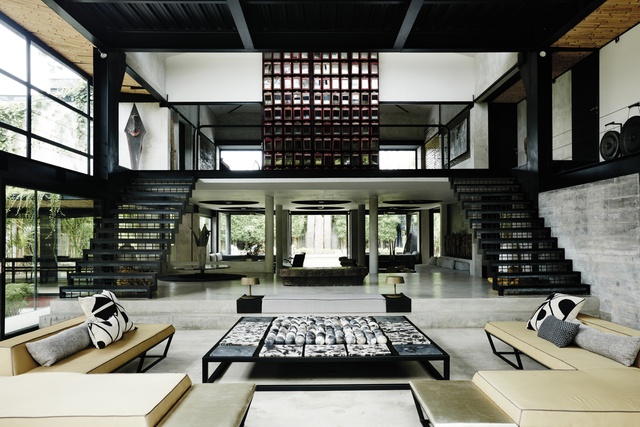
The site’s original structure, a simple, two-storey, brick-clad artist’s studio, needed opening up. In order to obtain a breezy open plan, walls were cut into and opened up, adding onto the back and sides to create a 800m2 steel, glass and concrete box with industrial elements.
“We love minimalism; clean, simple yet luxurious. Japan is the essence of minimalism where everything has its place and I would have to say this was our biggest inspiration. We wanted something easy to maintain so we focused on concrete, glass and steel. In addition, we wanted something eco-friendly so we sourced everything locally and entirely repurposed the previous home which used to be on the land – the roof became the bridge and the dining table.”
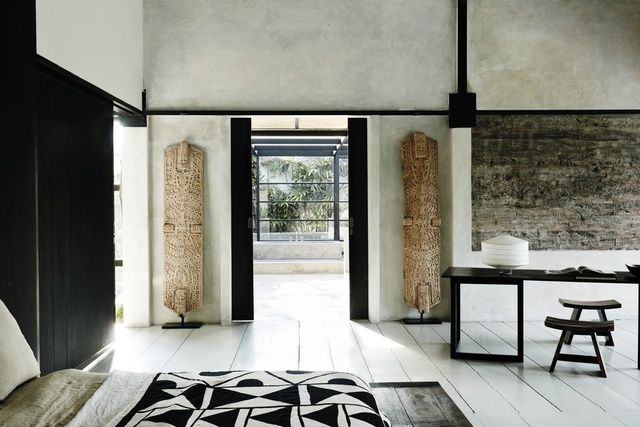
The shared living areas are placed in the centre of the main gathering room, while the five bedrooms with en-suite bathrooms occupy the perimeter-facing gardens. As an extension of the living room, the step-down gathering area features a smaller sitting area with an all-concrete dining space off to the side.
A modern addition of glass, concrete and steel was constructed at the back of the house, above the living room, to house the master bedroom suite. Sections of the original artist studio’s brick walls lend texture to the room.
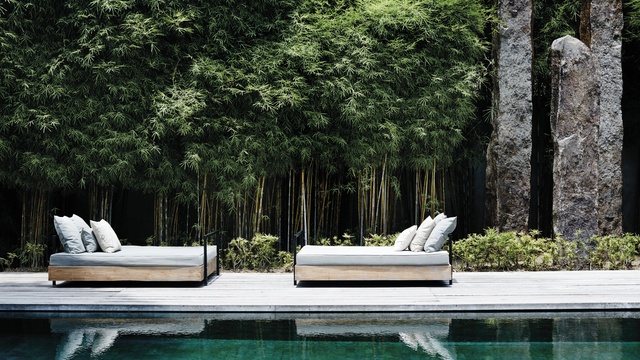
According to Denoncourt, the biggest challenge in the rebuild was the discipline of reusing, repurposing and recycling. All the materials from the building’s original structure were either recycled or used as foundation and landfill, making the property low consumption with a small carbon footprint.
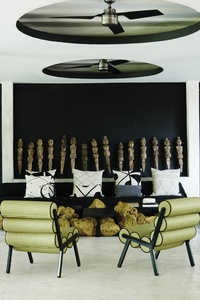
“We have tried to create a building that is both beautiful and sustainable,” says Denoncourt of the property he shares with his banker wife, Marie-Soazic, and their two children, Hugo and Eva.
The home is filled with custom furnishings, many locally crafted with a modern twist. The extra-large, petrified wood coffee table placed in the centre of the main living room is surrounded with Raku tiles from Gaya Ceramic and Design. Asian antiques collected over the years are scattered throughout. A 15th-century Majapahit stone bench from Java, three variously sized gongs from Sumatra on the mezzanine floor, and a wooden Japanese stool below the stair emphasise the strong Asian influence.
The home is a celebration of design and a celebration of Indonesia, a country where everything is turned into art.
“It was really a project we did together as a family – my wife, son and daughter. We’ve always loved Bali and wanted to create a home here. I believe this land is magical; it gives back to everyone who visits. Our home is a place to be shared, surrounded by simple beauty.”

